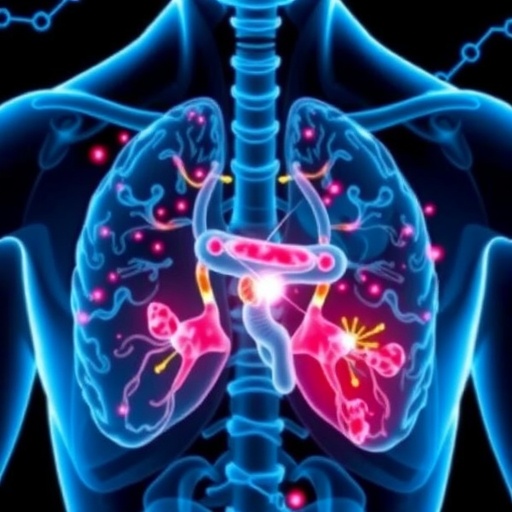Single-cell RNA sequencing is emerging as a powerful technology in modern medical research, allowing scientists to examine individual cells and their behaviors in diseases like cancer. But the technique, which can’t be applied to the vast majority of preserved tissue samples, is expensive and can’t be done at the scale required to be part of routine clinical treatment.
In an effort to address these shortcomings, researchers at the Stanford University School of Medicine invented a computational technique called CIBERSORTx that can analyze the RNA of individual cells taken from whole-tissue samples or data sets. “We believe this technique has major implications for biomedical discovery and precision medicine,” said Aaron Newman, PhD, assistant professor of biomedical data science.
A paper describing their method will be published online May 6 in Nature Biotechnology. Newman is the lead author of the paper; Ash Alizadeh, MD, PhD, associate professor of medicine, is the senior author.
Pinpointing cells and their states
CIBERSORTx is an evolutionary leap from the technique the group developed previously, called CIBERSORT. “With the original version of CIBERSORT, we could take a mixture of cells and, by analyzing the frequency with which certain molecules were made, could tell how much of each kind of cell was in the original mix without having to physically sort them,” Alizadeh said.
“We made the analogy that it was like analyzing a fruit smoothie,” Newman said. “You don’t have to see what fruits are going into the smoothie because you can sip it and taste a lot of apple, a little banana and see the red color of some strawberries.”
CIBERSORTx takes that principle much further. The researchers start by doing a single-cell RNA analysis of a small sample of tissue. They might take a cancerous tumor, for instance, separate the cells in the tumor and look closely at the RNA (and therefore the proteins) that each cell makes. From this they produce a “bar code,” a pattern of RNA expression, that identifies not only the kind of cell they are looking at, but also the subtype or mode it’s operating in. For instance, Alizadeh said, the immune cells infiltrating a tumor act differently and produce different RNA and proteins — and therefore a different RNA bar code — than the same kind of immune cells circulating in the blood.
“What CIBERSORTx does is let us not just tell how much apple there is in the smoothie, but how many are Granny Smiths, how many are Red Delicious, how many are still green and how many are bruised,” Alizadeh said. “Similarly, starting with a mix of RNA barcodes from a tumor can give us insights into the mix of cell types and their perturbed cell states in these tumors, and how we might be able to address these defects for cancer therapy.”
Being able to identify not only the types of cells, but also their state or behaviors in particular environments, could lead to dramatic new biological discoveries and provide information that could improve therapies, the scientists said.
The group analyzed over 1,000 whole tumors with the technique and found that not only were cancer cells different from normal cells, as expected, but immune cells infiltrating a tumor acted differently than circulating immune cells — and even normal structural cells surrounding the cancer cells acted differently than the same type of cells in other parts of an organ. “Your cancer cells are changing all the other cells in the tumor,” Newman said. The researchers even showed that the immune cells infiltrating one type of lung cancer were different from the same type of immune cells infiltrating another type of lung cancer.
A major strength of CIBERSORTx is that it can be used on tissue samples that have been “pickled” in formalin and stored in paraffin, which is true of the vast majority of diagnostic tumor samples. Most of these samples cannot be analyzed through single-cell RNA sequencing because the cell walls are often damaged or the cells can’t be separated from each other. This makes single-cell RNA analysis impractical or impossible for most large studies and clinical trials, where information about how cells are behaving is crucial.
Predicting therapy responses
The researchers also tested the tool’s diagnostic power by analyzing melanoma tumors. One of the most effective therapies for metastatic melanoma and some other cancers are drugs that block the production of proteins called PD-1 and CTLA4 in the T cells that infiltrate and attack the tumors. But these “checkpoint inhibitor” drugs work well in a minority of patients, and there has been no easy way to tell which patients will respond.
One prior hypothesis has been that if a patient has high levels of PD-1 and CTLA4 in the T cells infiltrating their tumor, these drugs are more likely to work, but researchers have had difficulty ascertaining whether this was true. CIBERSORTx allowed the team to explore this question. After training their algorithms on single-cell RNA data from a few melanoma tumors, they analyzed publicly available data sets from previous studies on bulk melanoma tumors and tested fixed samples. They confirmed the hypothesis, finding that high levels of expression of PD-1 and CTLA4 in certain T cells was correlated with lower mortality rates among patients being treated with PD-1-blocking drugs.
CIBERSORTx may also allow the discovery of new cell markers that will provide other pathways for attacking cancer, the researchers said. Using the tool to analyze stored tissues and correlating cell types with clinical outcomes may point to genes and proteins that are important for cancer growth, they said. “It took 30 years to identify PD-1 and CTLA4 as important proteins, but these markers just jump out of the data when we use CIBERSORTx to correlate gene expression of cells in tumors with treatment outcomes,” Alizadeh said.
“We see so many new molecules that could prove interesting,” Newman said. “It’s a treasure trove.”
As with the original tool, the scientists plan to let researchers from around the world use CIBERSORTx algorithms on computers at Stanford through an internet link. Newman and Alizadeh think they will see a lot of online traffic. “We expect to see smoke coming out of the computer room,” Alizadeh said.
###
Alizadeh and Newman are both members of the Stanford Institute for Stem Cell Biology and Regenerative Medicine, Stanford Bio-X, the Stanford Ludwig Center and the Stanford Cancer Institute.
Other Stanford co-authors are associate professor of radiation oncology Maximilian Diehn, MD, PhD, postdoctoral scholars Chloé Steen, PhD, Mohammad Esfahani, PhD, and Bogdan Luca, PhD; research associate Chih Long Liu, PhD; assistant professor of medicine Andrew Gentles, PhD; former postdoctoral scholars Aadel Chaudhuri, MD, PhD, and Florian Scherer, MD; assistant professor of medicine Michael Khodadoust, MD, PhD; and adjunct clinical assistant professor of pathology David Steiner, MD.
Support for the research came from the National Cancer Institute (grants R00CA187192, U01CA194389, R01CA188298 and U01CA154969), the Stinehart-Reed Foundation, the Virginia and D.K. Ludwig Fund for Cancer Research, the US Department of Defense, the V Foundation for Cancer Research, the Leukemia and Lymphoma Society, the Damon Runyon Cancer Research Foundation and the American Society of Hematology.
Stanford’s departments of Medicine and of Biomedical Data Science also supported the work.
The Stanford University School of Medicine consistently ranks among the nation’s top medical schools, integrating research, medical education, patient care and community service. For more news about the school, please visit http://med.
Media Contact
Christopher Vaughan
[email protected]





